Should anyone have had any doubts, the barbaric murder of US photojournalist James Foley fully exposes the true nature of the Islamist terrorists menacing the Middle East. Unfortunately, the savagery exhibited in what happened to James Foley was not unique—beheadings and suicide bombings have become standard tactics in the Islamist terrorists’ way of war. Just weeks before Foley’s murder Kosovo jihadi Lavdrim Muhaxheri posted similar photos of himself “in action” in Iraq. Such Islamist-terrorist ritual beheadings were seen during the Bosnian jihad as well, when extremists would produce “promotional videos” of their efforts showing the decapitation of Serb prisoners, or, in another case, when Bosnian jihad veteran Omar Saeed Sheik was involved in the murder/ beheading of Wall Street Journal reporter Daniel Pearl.
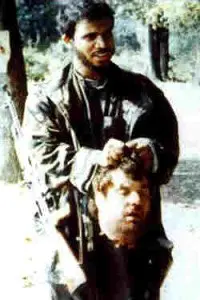
Bosnian jihadi with the head of a decapitated Serb prisoner, circa 1993

Kosovo jihadi Lavdrim Muhaxheri beheading a captive in Iraq, July 2014

Bosnian jihad veteran Omar Saeed Sheik, participant in the murder/beheading of Wall Street Journal reporter Daniel Pearl
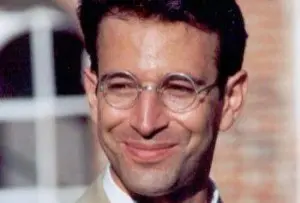
American photojournalist James Foley

The expansion of militant Islamism from places such as Afghanistan, Egypt, Iran and Saudi Arabia to parts of the world such as the Balkans is no accident; it is part of a complex phenomenon involving several distinct elements, not the least of which is an organized, well-funded effort by hardline Islamist states to export their extremist ideologies to other parts of the world. With respect to the Balkans, for instance, by one estimate the Saudis alone spent $1 billion (US) on “Islamic activities” in Bosnia between 1992-98.[1]
A second important element in the spread of militant Islamism is the education of increasing numbers of local Islamic clerics in the Middle-Eastern universities and madrasas where the most extreme interpretations of Islam are promoted. All of the leaders of the Balkan militant Islamist movement, for instance, including individuals such as Nedžad Balkan, Bilal Bosnić, Nezim Halilović-Muderis, Nusret Imamović, or the Kosovo clerics (and Al-Azhar alumni) Zekerija Qazimi and Lulzima Qabashi, recently arrested for recruiting young men for the Syrian and Iraqi jihads, were educated in the Middle-East, where they were exposed to the ideology of militant Islamism and formed connections and ties with other members of the global jihad movement.
A third (and probably the most crucial) element in the emergence of a militant Islamist movement is the existence of an indigenous extremist group that endorses and adopts its ideological precepts. As we have seen in the case of the Balkans, when these elements converge, the outcome is an intelligence and security debacle, as is clear from reviewing the numerous Bosnian connections to the World Trade Center attacks in 1993 and 2001.

Kosovo jihadi Blerim Heta, “the Balkans first suicide bomber,” killed over twenty people in Baghdad in March 2014

Bosnian jihadi Emrah Fojnica, killed in an abortive suicide mission in Iraq in August 2014

Endorsing suicide terrorism—Bosnian Wahhabi leader Sheik Nusret Imamović
In April 2008, Richard Holbrooke claimed that “If it had not been for the Dayton Peace Accords, 9/11 would probably have been planned in Bosnia, not in Afghanistan.”[2] The numerous Bosnian connections to both World Trade Center attacks suggest that the situation was probably even more serious than Holbrooke realized. Although no evidence has yet emerged that Izetbegov ić, or his associates had prior knowledge of or approved of the two World Trade Center attacks, what is clear is that they directly associated and collaborated with the individuals and groups that did. As former Al Qaeda operative Ali Hamad testified, during the Izetbegović, period Al Qaeda operatives came to Bosnia with “state protection,” [3] and both the U.S. and Saudi governments accused the Izetbegović, regime of providing travel documents to known terrorists.[4] In just one telling example of the extent to which international terrorists could obtain new identities in Bosnia, in September 1997 Italian police uncovered a plot to assassinate the late Pope John Paul II during a pastoral visit to Bologna—and all of the fourteen men arrested were travelling on Bosnian passports. [5] Indeed, Izetbegović, could probably boast hosting more international terrorists per square kilometer of territory he controlled than could Mullah Omar and the Taliban in Afghanistan.[6] As Richard Clarke, former National Coordinator for Security, Infrastructure Protection, and National Security noted, “Many of the names we first encountered in Bosnia showed up later in other roles, working for Al Qaeda . . .. Although Western intelligence agencies never labeled [the mujahedin activities] in Bosnia an al Qaeda jihad, it is now clear that is exactly what it was.”[7]
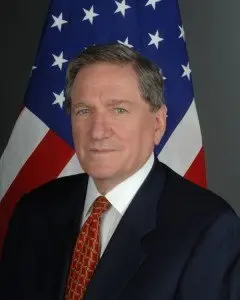
“If it had not been for the Dayton Peace Accords, 9/11 would probably have been planned in Bosnia, not in Afghanistan.” Richard Holbrooke
This of course follows a well-established, predictable pattern of what ensues when militant Islamist movements take control of territory and institutions, and ideological affinities impel them toward alliances with the most extreme elements along the militant Islamist spectrum. Whether observing Afghanistan under the Taliban, Iran under the Ayatollah Khomeini and Mahmud Ahmadinejad, Lebanon under Hezbollah, the Gaza Strip under Hamas, Sudan under Hasan al-Turabi and his National Islamic Front, or Bosnia under the Izetbegović, regime, such movements consistently provide the permissive environments and safe havens Islamist terrorists need to set up the organizations and infrastructure needed to plan operations and train and recruit new adherents.
How and why Bosnia became what is probably Al Qaeda’s main safe haven and operational base in Europe is a complicated story, of which the war in Bosnia in the 1990s certainly plays a large part. Outmanned and outgunned, it was predictable that the Izetbegović, regime would accept help from where it could get it.
Yet to reduce Al Qaeda’s presence in the region to the exigencies of war ignores the many other factors involved in this phenomenon. Here a comparison of the different trajectories Bosnia and Kosovo have taken with respect to Islamist militancy is instructive, for it reveals the vital importance local leadership choices play in determining whether or not Al Qaeda establishes a prominent presence in a specific country. Both Bosnia and Kosovo (together with Albania) can be said to have the most secular and pro-Western Muslim populations in the world. Yet although Kosovo is fighting its own battle against Islamist extremism, Kosovo’s dominant elites never showed any express interest in militant political Islamism.
Bosnia provides a substantially different example. Support and enthusiasm for extreme Islamist movements is a demonstrable constant in Alija Izetbegović,’s political career. From the 1940s, when Izetbegović’s “Young Muslim” movement swore an oath asking Allah to grant them perseverance on their “path of jihad,” their “uncompromising struggle against everything non-Islamic” and their self-confessed goal of creating a “great Islamic state,” to the 1970s when Izetbegović, would claim that “There is no peace or coexistence between Islamic faith and non-Islamic social and political institutions,” to the early 1980s when Izetbegović, and his colleagues were building relationships with the Ayatollah Khomeini’s Islamic Republic,[8] what remained consistent in Izetbegović’s political outlook was a preference for more extreme Islamic states such as Pakistan and Iran and a pronounced distaste for moderate, secularly-oriented Muslim states such as Kemalist Turkey.[9] As Robert Baer, a CIA agent stationed in Bosnia during the war noted, “In Sarajevo, the Bosnian Muslim government is a client of the Iranians . . . If it’s a choice between the CIA and the Iranians, they’ll take the Iranians any day.”[10] Dangerous evidence of this was seen when Izetbegović’s intelligence service betrayed the incoming CIA station chief to the Iranians in Bosnia, who quickly beginning planning his assassination.[11]
Apart from leadership choices, another factor playing a large role in how Bosnia became such an important element in Al Qaeda’s global strategy was financial. The hundreds of millions of dollars states such as Saudi Arabia, Iran and other hardline Islamic countries put into Bosnia bought considerable loyalty, or at the very least a willingness on the part of Izetbegov ić’s officials to ignore the activities of the numerous “charities” and “humanitarian organizations” operating as Al Qaeda front operations in Bosnia. In 1996, the CIA determined that Izetbegović, himself was “literally on the [Iranian] payroll,” receiving on just one occasion $500,000 (US) in cash from Iranian agents.[12]
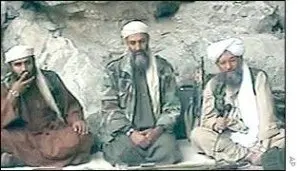
Bosnian jihad veteran Sulaiman abu-Ghaith with Osama bin-Laden and Ayman al-Zawahiri, Afghanistan, circa November 2001.
The first World Trade Center bombing in February 1993 was financed in part by monies provided by the Third World Relief Agency (TWRA), a Vienna-based “Islamic charity” founded by a long-time Izetbegović, associate, the Sudanese national Elfatih Hassanein. Former National Security Agency analyst John Schindler has called TWRA “Bosnia’s unique gift to radical Islam and Al Qa’ida . . . the Bosnian ‘model’ of how to use NGOs and aid money to pay for jihad and terrorism.”[13] According to Thomas Joscelyn,
“TWRA was run by senior Bosnian government officials, and sponsored the relocation of hundreds, if not thousands, of jihadists to Bosnia to fight in the 1990s. While carrying out some legitimate humanitarian functions as a cover, TWRA was really a front for global terrorist operations.[14]”
A number of Alija Izetbegović’s closest associates were on the board of TWRA. At a meeting in Vienna on 14 September 1992 attended by Izetbegović, Ejup Ganić, Haris Siljadžić and Hassanein, Izetbegović intimates rfan Ljevaković, Husein Živalj and Derviš Djudjević were elected to the board of TWRA.[15] (Živalj, and Djudjević had gone to prison with Izetbegović that Hassanein, Cerić, Hasan Čengić (widely considered to be the leading Iranian agent in Bosnia, and Bakir Izetbegović (currently a member of Bosnia’s joint state presidency) also controlled the Vienna TWRA account.[16]

Osama bin Laden with Bosnian jihad veteran Khaled al-Harbi (on right), Afghanistan, November 2001
Clement Rodney el-Hampton, an American who had trained in terrorist camps in Afghanistan, admitted in federal court that he had obtained TWRA funds to operate military-style training camps in New York, Connecticut, and Pennsylvania for individuals who would go on to be involved in the 1993 World Trade Center attack.[17] In addition to obtaining TWRA funds from Vienna, Hampton-el is also reported to have gone to Bosnia circa 1992-93.[18] Another TWRA employee, John Fawzan, was discovered to have been the suicide bomber involved in the October 1995 attack on the police headquarters in Rijeka, Croatia.[19] In December 1995, Bosnian Croat forces near Zepce in central Bosnia killed an individual wanted in connection with the first World Trade Center bombing.[20]
Another individual involved with TWRA was Omar Abdel-Rahman, a.k.a. “the blind sheik,” convicted in U.S. federal court for seditious conspiracy in the Landmarks Bombing Plot in 1993, which had targeted the United Nations Building, the Lincoln and Holland tunnels, the George Washington Bridge, and FBI headquarters in Manhattan.[21]

The Bosnian connections to the greatest mass murder in American history are just as direct. Khalid Sheikh Muhammed, the mastermind of the 9/11 attacks, fought in the Bosnian jihad and was given Bosnian citizenship. Two other 9/11 bombers, Khalid al Mindhar and Nawaf al Hamzi, also fought in Izetbegović’s army.[22] The British journalist Eve-Anne Prentice of The Guardian and German journalist Renate Flottau of Der Spiegel reported meeting Osama Bin Laden in Izetbegović’s office during the war,[23] and Bin Laden was even given a Bosnian passport by Izetbegović’s foreign ministry.[24] When asked to respond to allegations that he had met bin-Laden and Ayman al-Zawahiri, Izetbegović’ evasively replied “During and after the war I met with thousands of people coming from the Islamic world but I can remember the faces and names of only a few.”[25] The Bosnian politician Sejfudin Tokić has claimed that Council of Europe officials had told him of the existence of a photograph showing Izetbegović with bin-Laden.[26]
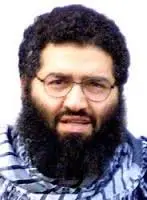
Bosnian jihad veteran Khalid Sheikh Mohammed, mastermind of the 9/11 attacks
Bosnian jihad veteran and Mohammed Atta recruiter Mohamed Haydar Zammar, “surrogate father to the pilots surrounding Mohammed Atta”
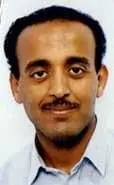
Bosnian “tourist” Ramzi Bin al-Shihb, “coordinator” of the 9/11 attacks
The core group behind the 9/11 attacks was Al Qaeda’s so-called “Hamburg cell,” led by Bosnian jihad veteran Mohammed Haydar Zammar, reportedly the man who recruited Mohammed Atta, the ringleader of the 9/11 attacks.[27] Zammar has been variously described as the “patron” of the Hamburg Cell, the man “under whose tutelage” it operated,[28] and “a sort of surrogate father to the pilots surrounding Mohammed Atta.”[29] Ramzi Bin al-Shibh, “coordinator” of the 9/11 attacks, was seen in Bosnia in the summer of 1996.[30] Other 9/11 participants have been reported to have Bosnian connections as well.[31]
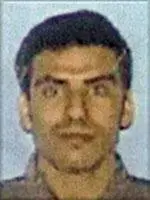
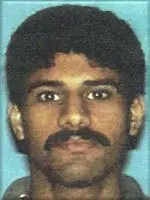
Left to Right: Bosnian jihad veterans Khalid al Mindhar and Nawaf al Hazmi, hijackers of AA Flight 77 on 9/11
Sarajevo rental-car agent Reda Seyam, named by a Spanish court as “Osama Bin Laden’s financier in Europe,” deposited $250,000 into an account controlled by Mamoun Darkanzli, and Hamburg businessman of Syrian origin with known ties to the 9/11 bombers.[32] Seyam himself was subsequently implicated in the October 2002 Bali nightclub bombings.[33]
Darkanzli attracted the attention of the Bundesnachtrichtdienst (the German intelligence service, or BND) when they noticed he had power-of-attorney over a German bank account opened by Mamdouh Mahmud Salim. According to US government lawyers, Salim “was present for the founding of al Qaeda, served on its shurah (consultation) council, issued fatwahs authorizing violence against America and authorized efforts to obtain uranium for nuclear weapons for al Qaeda . . . [Salim] described Bosnia as the base for al Qaeda operations in Europe.”[34] Salim, who was subsequently convicted in US federal court for being the organizer of the August 1998 US African embassy bombings, travelled to Bosnia on a “business trip” on the eve of the bombings at the invitation of the Bosnian-based “Ljiljan Commerce Group” on a visa issued to him by the Bosnian consulate in Turkey.[35]
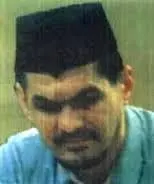
Al Qaeda co-founder Mamdouh Mahmud Salim, made a “business trip” to Bosnia on the eve of the US African Embassy bombings in 1998.
Another organization used to support the Bosnian jihad was the Saudi High Commission for Relief to Bosnia (SHC), which a US federal court ruled was “a fully integrated component of al Qa[e]da’s logistical and financial support infrastructure.” Raids on SHC offices in Sarajevo in October 2001 found “computer hard drives containing photos of the World Trade Center, the U.S. embassies in Kenya and Tanzania, and the U.S.S. Cole (all targets of terrorist attacks); documents about pesticides and crop dusters; photos and maps of Washington, D.C. (with prominent government buildings marked); and instructions for fabricating U.S. State Department badges.”[36] Further raids Sarajevo turned up Al Qaeda’s donor’s list, the so-called “Golden Chain,” along with other documents relating to Al Qaeda’s founding.
An indication of how secure Al Qaeda leaders must have felt in Bosnia at this time is the fact that in the wake of the 9/11 attacks, security officials claimed that some seventy Al Qaeda members were planning to flee from Afghanistan for Bosnia in anticipation of expected U.S. attacks on the Taliban. [37]
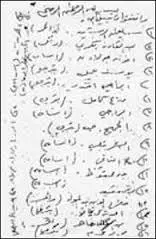
An excerpt from Al Qaeda’s donor’s list, the “Golden Chain,” discovered in Sarajevo, March 2002.
One month after the 9/11 attacks, Alija Izetbegovič resigned from the last of his public positions, despite the fact that only weeks before he had been expected to serve one more term. As one analyst noted,
“Despite desperate attempts to conceal his duplicity in his dealings with Muslim militants, Izetbegovič’s days as a respected political leader were permanently over. A month after the terrorist attacks in New York and Washington, he officially stepped down as head of Bosnia’s most powerful Muslim nationalist party, citing health reasons.”[38]
Upon Izetbegovič’s death in October 2003 the International Criminal Tribunal for the Former Yugoslavia (ICTY) announced that he had been under investigation for war crimes.
In 1996, the Third World Relief Agency was awarded a gold medal by the Izetbegovič government for its “services to Bosnia.” In the same year, the Central Intelligence Agency named TWRA an NGO that “employ[s] members or otherwise facilitate[s] the activities of terrorist groups operating in Bosnia.”[39]
In May 2008, Bosnian Federation TV reported that Hasan Čengić, one of Alija Izetbegović’s closest political allies, “personally signed a money transfer intended for the Al-Qai’dah 9/11 terrorist attacks on New York and Washington.”[40]
In December 2013, the US Court of Appeals for the Second District restored a lawsuit brought by 9/11 families and victims that named the Saudi High Commission for Relief of Bosnia and Herzegovina as a defendant in a case they have brought in U.S. federal court.
In March 2014, Bosnian jihad veteran Sulaiman abu-Ghaith was convicted in US Federal Court for conspiring to kill Americans during the 9/11 attacks.
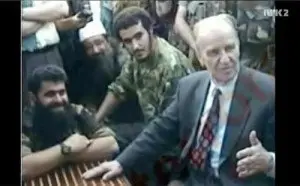

“Either you are with us, or you are with the terrorists.” President George W. Bush, September 20th, 2001. Pictured top: Alija Izetbegović with Abu el-Maali, aka, “the little Osama bin Laden,” central Bosnia, circa 1995; Bakir Izetbegović with Mahmoud Ahmadinejad, Cairo, February 2013.
In 2010, a Bosnian security official estimated that there are 3000 potential terrorists in Bosnia.[41] Indeed, until March of this year, Izetbegović’s former personal intelligence chief—who was on the US Office of Foreign Assets Control Specially Designated Nationals & Blocked Persons List (primarily for his association with Iranian intelligence services)—remained the head of the Security Affairs Committee of Izetbegović’s Islamist party.[42] According to a recent Austrian intelligence report, the milieu in which militant Islamism in southeastern Europe flourishes, the Wahhabi movement, continues to grow in Bosnia and build new communities,[43] and one estimate suggests that Bosnia has contributed more volunteers for the Syrian jihad (per capita) than any other country in Europe.[44] Sarajevo’s Saudi-funded King Fahd Mosque has reportedly become a popular destination for second-generation Afghan and Pakistani youths from the UK; in fact, four individuals under surveillance by British intelligence fled to the King Fahd mosque in the aftermath of the London 7/7 Underground Bombings.[45] (In 2003, the CIA had attempted to infiltrate the King Fahd mosque’s Al Qaeda cells with a Pakistani double agent, Abdulrahman Khadr, the son of a prominent Al Qaeda official.)[46] A few years ago, a current member of Bosnia’s presidency, Alija Izetbegović’s son Bakir, was caught trying to sell surface-to-air missiles to Al Qaeda in Iraq (“by mistake,” according to his apologists), for which the Americans reportedly threatened him with a trip to Guantanamo.[47] Just as ominously, in May 2013, one of the fathers of the Pakistani nuclear program, Zahid Ali Akbar Khan, was discovered in Bosnia after fleeing corruption charges in Pakistan.
Regrettably, the response of international officials to Al Qaeda’s activities in Bosnia has bordered on what could perhaps most accurately be described as treasonable negligence. Even as Mamdouh Salim was visiting Bosnia and individuals such as Amer Azizi (involved in the March 2004 Madrid Train bombings which killed 200 people) and would-be shoe-bomber Saajid Badat were training in terrorist camps in Bosnia (in the post-Dayton period, it should be stressed), international officials continued to deny or even sabotage efforts to deal with the problem. Former international High Representative Paddy Ashdown dismissed the only Bosnian official who had up until then been willing to deal with Islamist militants, and in the wake of the 9/11 bombings, all evidence to the contrary notwithstanding, his predecessor as high representative somewhat unbelievably would claim that “no evidence has been provided [that Bosnia] has served as a base for Al Qaeda,”[48] to which a leading expert on Al Qaeda’s activities in Bosnia replied that individuals who deny that Al Qaeda is operating in the Balkans “are either lying or have no idea what they are talking about.”[49] For his part, the current high representative has claimed that the Wahhabis in Bosnia “pose no danger to Europe,”[50] even after Mevlid Jašarevič attacked the US embassy in Sarajevo in October 2011 (Jašarevič’s companion that day, Emrah Fojnica, recently died in an abortive suicide bombing in Iraq), and after Bosnian émigré Adis Medunjanin was accused by US Attorney General Eric Holder of being involved in the “the most serious terrorist threat against New York City since 9/11.”[51]
Paradoxically, Balkan militant Islamists are much more forthright about their objectives and activities than the international officials who are supposed to “monitor the peace process” in Bosnia and defend US and European interests in the region. As the Bosnian terrorist/Syrian jihadi Bajro Ikanovič noted, “I left Bosnia with the intention only to return with weapons in my hand. I am a part of the revolution and this is the morning of Islam . . . [by allowing us to leave Bosnia] your intelligence agencies made a mistake thinking that they would be rid of us, however, the problem for them will be the return of individuals trained for war.”[52]
Footnotes
[1] See Nenad Pejic, “The Suicide of Multiethnic Sarajevo,” at http://www.rferl.org/content/The_Suicide_Of_Multiethnic_Sarajevo/2023847.html Accessed on 26 November 2013 at 12:02pm EST.
[2] See Holbrooke, “Lessons from Dayton for Iraq,” The Washington Post, 23 April 2008, A21.
[3] See “Jihad, Bought and Sold,” ISN Security Watch, 26 January 2009, available at: http://www.isn.ethz.ch/isn/Security-Watch/Articles/Detail/?lng=en&id=95734 Accessed on 30 June 2012 at 3:09pm EST.
[4] See Nicholas Wood, “Police Raid Raises Fear of Bosnia as Haven for Terrorists,” The New York Times, 3 December 2005.
[5] See Anes Alic, “The Ringleaders of the Bosnia-Herzegovina Wahhabi Movement,” at http://www.jamestown.org/single/?no_cache=1&tx_ttnews[tt_news]=1048 Accessed on 14 June 2012 at: 8:06pm EST, and Anes Alic, “Wahhabism: From Vienna to Bosnia,” ISN Security Watch, 6 April 2007, at http://www.isn.ethz.ch/isn/Security-Watch/Articles/Detail//?id=53104&lng=en Accessed on 15 September 2012 at 11:28am EST. Two other Bosnia-based attempts against Pope John Paul II were made. In April 1997, a bomb was placed under a bridge along which the Holy Father’s motorcade was supposed to pass during his visit to Sarajevo. In April 2005, Italian investigators also discovered a Gornja Maoča-based plot to attack Pope John Paul II’s funeral and kill the assembled world leaders there. See Rade Maroevic and Daniel Williams, “Terrorist Cells Find Foothold in the Balkans,” The Washington Post, 1 December 2005; John R. Schindler, Unholy Terror: Bosnia, Al-Qa’ida and the Rise of Global Jihad (St. Paul, MN: Zenith Press, 2007), 316; and Dženana Halimović, “Vehabije u Bosni: Od Bočinje do Maoče,” at http://www.slobodnaevropa.org/content/maoca_vehabije_selefije_akcija_svjetlost/1950070.html, accessed on 19 November 2013 at 10:38am EST.
[6] As former US counter-intellgence Just a partial listing of international terrorist attacks that involved individuals who had been in Izetbegović’s armed forces or in Izetbegović-controlled territory in Bosnia includes Clement Rodney Hampton-el (First World Trade Center Bombing, February 1993); Anwar Shabaan and John Fawzan (Rijeka police headquarters bombing, October 1995); Muslih al-Shamrani (Saudi National Guard building bombing, Riyadh, November 1995); Ali Ahmed Ali Hamad, Ahmad Zayid al-Zuhayri, and Nabil al-Hilai (Mostar car bombing, September 1997); Mamdouh Mahmud Salim and Abdul Rahim al-Nashiri (US African Embassy bombings, August 1998; al-Nashiri was also involved in the October 2000 attack on the USS Cole in Aden Harbor); Karim Said Atmani (LAX/Millenium bomb plot, December 1999); Khalid Sheik Muhammed, Nawaf al-Hazmi, Khalid al-Mindhar, and Ramzi Binalshib (9/11 attacks on New York City and Washington DC); Omar Saeed Sheik (Wall Street Journal reporter Daniel Pearl murder/beheading, February 2002); Reda Seyam (Bali nightclub bombings (October 2002); Habib Aktaş and Azad Ekinci (Istanbul bombings, November 2003); Amer Azizi (Madrid train bombings, March 2004); Abdel Aziz al-Muqrin (Al-Khobar massacres and murder/beheading of US citizen Paul Johnson, May/June 2004); Abu Hamza al-Masri (London Underground bombings, July 2005); and Zaki-ur-Rehman Lakhvi (Mumbai bombings, November 2008).
[7] See Clarke, Against All Enemies: Inside America’s War on Terror (New York: Free Press, 2004), 138
[8] See Gilles Kepel, Jihad: The Trail of Political Islam (Cambridge, MA: Belknap Press, 2002), 246.
[9] A point made by Vjekoslav Perica; see Balkan Idols: Religion and Nationalism in Yugoslav States (New York: Oxford University Press, 2002), 77. Izetbegović’s rejection of Turkey as an appropriate model for Muslim peoples would however change in the 1990s with the decline of the Kemalist system and the rise of Islamist leaders such as Necbettin Erbakan and Recep Tayyip Erdoğan.
[10] See Robert Baer and Dayna Baer, The Company We Keep (New York: Broadway, 2012), 130. Cees Wiebes has made a similar point, noting that during the war “Turkey and Saudi Arabia were very willing to deliver weapons and to lure Izetbegović away from Iran, but the orientation of the Bosnian government was far more towards Iran.” See Wiebes’ interview with Brendan O’Neill, “You are Only Allowed to See Bosnia in Black and White,” available at: http://www.spiked-online.com/articles/0000000CA374.htm Accessed on 13 May 2012 at: 9:20am EST. A former MI-6 official expressed similar views to Chris Deliso albeit stressing the Saudi connection instead: “the Bosnians are just not reliable partners. We’ve seen them befriending the Saudis, but also others if it suits [their interests]. Bottom line being, they are never going to be trusted completely.” See Deliso, “Attack on US Bosnia Embassy Not Seen as a Major Security Concern, Despite Precedents and International Links,” Balkananalysis.com, 28 November 2011, at http://www.balkanalysis.com/bosnia/2011/11/28/attack-on-us-bosnia-embassy-not-seen-as-a-major-security-concern-despite-precedents-and-international-links/ Accessed on 26 March 2014 at 7:36pm EST.
[11] For the story of the foiled Iranian plot to kill the CIA station chief in Sarajevo, see H.K Roy (pseudonym), Betrayal in the Balkans, August 2001, available at www.worldandi.com <http://www.worldandi.com> In 1995, Hezbollah operatives were also discovered in what is believed to have been a plan to assassinate U.S. officials in Croatia. See James Risen and Doyle McManus, “Terrorist Risk to Americans in Croatia is Linked to Iran,” The Los Angeles Times, 21 May 1996, at http://articles.latimes.com/1996-05-21/news/mn-6549_1_terrorist-threat Accessed on 24 March 2014 at 6:25pm EST.
[12] See James Risen, “Iran Gave Bosnia Leader $500,000, CIA Alleges,” The Los Angeles Times, 31 December 1996, available at http://articles.latimes.com/1996-12-31/news/mn-14139_1_iranian-influence Accessed on 22 October 2012 at 1:28pm EST. A written statement released to the press by the SDA in 1997 admitted that the party received the money, which it claimed was used to provide student scholarships. See Senad Slatina, “Iranski novac za bosanskog predsjednika?” Slobodna Bosna (Sarajevo), 12 January 1997.
[13] See Schindler, Unholy Terror: Bosnia, Al-Qa’ida and the Rise of Global Jihad, op. cit., 150.
[14] Thomas Joscelyn, “ISNA [Islamic Society of North America] Gave $100K to Terrorist Front Group,” The Weekly Standard, 24 June 2009, at http://www.weeklystandard.com/weblogs/TWSFP/2009/06/report_isna_gave_100k_to_terro.asp Accessed on 20 February 2014 at 10:19am EST.
[15] The most detailed investigation into TWRA’s operations made public so far was carried out by German police authorities at the request of the International Criminal Tribunal for the Former Yugoslavia (ICTY). See Expert Report Concerning the Area—Financial Investigations—relating to the judicial assistance request, ref. no. INV/10289/T09-PH (245), dated 8/27/2002 of the “Office of the Prosecutor” (OTP) of the International Court of Criminal Justice for the Former Yugoslavia relating to the “Third World Relief Agency” (TWRA) Vienna/Austria. Meckenheim: Federal Office of Criminal Investigations, ST-45-2-185-02, 8/28/2003.
[16] See Sefer Halilović’s interview with Senad Pečanin, “Izetbegović je izdajnik, a mora dokazati da nije kriminalac,” BH Dani 119 (Sarajevo), 10 September 1999 at http://www.bhdani.com/arhiva/119/inter.htm Accessed on 16 April 2013 at 9:23am EST. Cerić and Salim Šabić (at the time the vice-president of the SDA) have also been reported to have been in charge of TWRA’s Zagreb office; see Schindler, Unholy Terror: Bosnia, Al-Qa’ida and the Rise of Global Jihad, op. cit., 148.
[17] For a profile of Clement Rodney Hampton-el, see Francis X. Clines, “Spectre of Terror; U.S.-Born Suspect in Terror Plots: Zealous Causes and Civic Roles,” The New York Times, 28 June 1993, at http://www.nytimes.com/1993/06/28/nyregion/specter-terror-us-born-suspect-bombing-plots-zealous-causes-civic-roles.html Accessed on 25 March 2014 at 2:09pm EST.
[18] According to Landmarks Plot co-conspirator Siddig Ibrahim Siddig Ali; see Evan F. Kohmann, Al-Qaida’s Jihad in Europe: The Afghan-Bosnian Network (Oxford: Berg, 2004), 73-74.
[19] Ibid., 152-53.
[20] See Colin Soloway, “Kosovo Reckoning: Bin Laden Casts a Shadow over Sarajevo Summit,” The Independent (UK), 29 July 1999, at http://www.independent.co.uk/news/world/kosovo-reckoning-bin-laden-casts-a-shadow-over-sarajevo-summit-1109335.html Accessed on 11 June 2014 at 10:03am EST.
[21] For more on TWRA, see Douglas Farah, “The Role of Sudan in Islamist Terrorism: A Case Study,” 13 April 2007, at http://www.strategycenter.net/research/pubID.156/pub_detail.asp Accessed on 18 March 2014 at 12:31pm EST; Thomas H. Kean, et. Al., The 9/11 Commission Report: Final Report of the National Commission on Terrorist Attacks Upon the United States (New York: W.W. Norton & Company), 58; Kohlmann, Al-Qaida’s Jihad in Europe, op. cit., 45-47; John Pomfret, “Bosnia’s Muslims Dodged Embargo,” The Washington Post, 22 September 1996, p. A01, at http://www.washingtonpost.com/wp-srv/inatl/longterm/bosvote/front.htm. Accessed on 18 March 2014 at 10:06am EST; Dženana Karup-Druško, “BIO i ostao največi bošnjački tajkun,” BH Dani 229 (Sarajevo), 26 October 2001 at http://www.bhdani.com/arhiva/229/t22907.shtml Accessed on 16 April 2013 at 9:12am EST; Schindler, Unholy Terror: Bosnia, Al-Qa’ida and the Rise of Global Jihad, op. cit., 148-156; and Cees Wiebes, Intelligence and the War in Bosnia, 1992-1995 (Műnster: LitVerlag, 2003), 180-181.
[22] See Kean, et. Al., The 9/11 Commission Report: Final Report of the National Commission on Terrorist Attacks Upon the United States, op. cit., 154
[23] See Erich Follath and Gunther Latsch, “Der Prinz und die Terror-GMBH,” Der Spiegel (Hamburg), 15 September 2001.
[24] See Senad Pečanin, “I Osama bin-Laden ima bosanski pasoš,” BH Dani 121 (Sarajevo), 24 September 1999 at http://www.bhdani.com/arhiva/121/t212a.htm Accessed on 1 June 2012.
[25] See the interview with Izetbegović in Time (European edition), 31 October 2001.
[26] See Hana Imamović, “Reactions in South East Europe to the Attacks on September 11,” AIMPRESS Sarajevo, 11 October 2001, at http://www.aimpress.ch/dyn/dos/archive/data/2001/11012-dose-01-14.htm Accessed on 29 October 2013 at 12:28am EST.
[27] According to John Schindler; see “9/11 Planner Freed by Syrian Jihadists,” at his blog, The XX Committee, 11 March 2014, at http://20committee.com/page/2/ Accessed on 29 March 2014 at 10:13am EST.
[28] See Peter Finn, “Hamburg’s Cauldron of Terror: Within Cell of 7, Hatred Toward US Grew and Sept. 11 Evolved,” The Washington Post, 11 September 2002, A01.
[29] See Holger Stark, “The Forgotten Prisoner: A Tale of Extraordinary Renditions and Double Standards,” Der Spiegel (Hamburg), 21 November 2005, at http://www.spiegel.de/international/spiegel/the-forgotten-prisoner-a-tale-of-extraordinary-renditions-and-double-standards-a-386033.html Accessed on 30 March 2014 at 6:11pm EST.
[30] See John Crewdson (with Viola Gienger), “2 Firms Linked to Al Qaeda, Saudi Intelligence Agency,” The Chicago Tribune, 31 March 2004, at http://articles.chicagotribune.com/2004-03-31/news/0403310198_1_al-qaeda-saudi-arabian-mamoun-darkazanli Accessed on 7 February 2014 at 9:53am EST; and “JTF-GTMO Detainee Assessment for Ramzi Abdullah Mohammed Bin al-Shihb,” Department of Defense, Headquarters, Joint Task Force Guantanamo, 8 December 2006, at http://projects.nytimes.com/guantanamo/detainees/10013-ramzi-bin-al-shibh Accessed on 30 March 2014 at 6:25pm EST.
[31] For instance, Michael A. Ledeen, Resident Scholar at the American Enterprise Institute, has reported that Mohammed Atta, the operational leader of the 9/11 attack, trained in terrorist camps in Bosnia, and that Said Bahaji, another key member of the Hamburg Cell, had been in Bosnia as well. See “Talking to Iran,” The Wall Street Journal, 18 August 2007, at http://online.wsj.com/news/articles/SB118739533381601535 Accessed on 16 July 2014.
[32] See “Germany Nabs Suspected Al Qaeda Financier,” The Associated Press (Dateline Berlin, 16 October 2004), at http://usatoday30.usatoday.com/news/world/2004-10-16-al-qaeda-ties_x.htm Accessed on 31 March 2014 at 11:45am EST.
[33] Reda Seyam was an Egyptian suspected of helping to finance the October 2002 Bali bombings which killed over 200 people. Seyam managed a rental-car agency in Sarajevo which was considered a front for Saudi intelligence. A Spanish indictment against Seyam named him “Osama Bin Laden’s financier in Europe.” See Crewdson, et. Al., “2 Firms Linked to Al Qaeda, Saudi Intelligence Agency,” op. cit.; Richard Bernstein, “The Fear Born of a Much Too Personal Look at Jihad,” The New York Times, 27 September 2004, at http://www.nytimes.com/2004/11/27/international/europe/27fprofile.html?pagewanted=print&position=&_r=1& Accessed on 18 August 2014 at 8:45am EST; and John Crewdson, Viola Gienger, Lilian-Astrid Geese, and Dewi Loevard, “A Couple’s Life Torn Apart by Islamic Jihad,” The Chicago Tribune, 26 November 2004, at http://articles.chicagotribune.com/2004-11-26/news/0411260271_1_saudi-arabia-islamic-jihad-german-federal-prosecutor Accessed on 15 August 2014 at 8:23am EST.
[34] See “United States District Court, Northern District of Illinois, Eastern Division, United States of America vs. Enaam M. Arnout, Section 5, 68-69.
[35] Kohlmann, Al-Qaeda’s Jihad in Europe, op cit., 201.
[36] See “United States Court of Appeals, Second Circuit. IN RE: TERRORIST ATTACKS ON SEPTEMBER 11, 2001. Docket No. 06-0319-cv(L). Decided: August 14, 2008.”
[37] For reports on attempts by Al Qaeda leaders to flee to Bosnia after the 9/11 attacks, see Craig Pyes, Josh Meyer and William C. Rempel, “Bosnia Seen as Hospitable Base and Sanctuary for Terrorists,” The Los Angeles Times, 7 October 2001, at http://articles.latimes.com/2001/oct/07/news/mn-54505, accessed on 20 November 2013 at 11:48am EST; “Bosnian Leadership Prepared to Intercept Militants with Links to Bin-Laden,” Radio Free Europe/Radio Liberty Newsline, 1 October 2001; Azhar Kalamujić, “Agenti FBI učestvovali u hapšenju Jordanaca Abu Kharrourba Majeda,” Oslobodjenje (Sarajevo), 5 October 2001, 5. The director of Bosnia’s State Border Service, Tomislav Mihalj, also claimed that after 9/11 members of al-Qaeda were trying to reach Bosnia. BH Dani (Sarajevo), 30 November 2001, No. 234.
[38] See Kohmann, Al-Qaida’s Jihad in Europe, op. cit., 218.
[39] The CIA report on Bosnian NGO’s supporting terrorist organizations and operations is available at http://intelfiles.egoplex.com/cia-ngos-1996.pdf. Accessed on 10 July 2012 at 4:49pm EST.
[40] See “Bosnian TV Alleges Muslim Official Linked to 9/11 Attacks,” BBC Monitoring Europe, 9 May 2008. (Available on the LexisNexis Academic database). Accessed on 26 April 2013 at 9:19am EST.
[41] See the estimate by Almir Džuvo, director of the BiH Intelligence-Security Agency (OSA), as cited in the European Police Mission BiH Daily Media Summary, 13 July 2010 at http://www.eupmbih.eu/Detail.aspx?ID=1451&TabID=5 Accessed on 12 July 2012 at 9:01 EST.
[42] See Specially Designated Nationals and Blocked Persons List (Washington, DC: Department of the Treasury, Office of Foreign Assets Control, 14 August 2014), 100.
[43] See Verfassungsschutzberiicht 2014 (Wien: Bundesamt fűr Verfassungsschutz und Terrorismusbekämpfung, 2014), 36.
[44] Estimate according to Thomas Hegghammer of the Norwegian Defense Research Establishment, as cited by Frank Gardner, “Europe Could Feel the Backlash from Jihadist Conflicts,” at http://www.bbc.co.uk/news/world-middle-east-25155188 Accessed on 2 December 2013 at 10:19am EST.
[45] See Nick Pisa, “Terror Hunt for 7/7 Bomber’s Relative in Bosnian Mosque,” The Mail on Sunday (London), 12 February 2006, 23.
[46] For the story of Abdulrahman Khadr, see the PBS Frontline Documentary “Son of Al Qaeda,” at http://www.pbs.org/wgbh/pages/frontline/shows/khadr/etc/script.html Accessed on 14 July 2014 at 2:36pm EST.
[47] According to a leaked STRATFOR report; see “Re: G3* – BOSNIA/SERBIA – Dodik wins RS presidential race,” (Date: unspecified, but apparently October 2010), at https://wikileaks.org/gifiles/docs/18/1855532_re-g3-bosnia-serbia-dodik-wins-rs-presidential-race-.html Accessed on 18 August 2014 at 2:20pm EST.
[48] See Petritsch, “Islam is Part of the West, Too,” The New York Times, 20 November 2001, at http://www.nytimes.com/2001/11/20/opinion/20PETR.html Accessed on 9 April 2014 at 2:04pm EST. Petritsch did add the proviso “although this cannot be excluded,” although given the fact that he had been in Bosnia over two years at this point, to be unaware of or unwilling to admit the role Bosnia played in the greatest security threat to Western interests in the post-Cold War era reveals the willful ignorance all too many Western officials maintain about the region.
[49] As quoted by Branka Branković, “Selefije i vehabije ozbiljna pretnja region,” Danas (Belgrade), 26 November 2008, at http://www.danas.rs/danasrs/drustvo/terazije/selefije_i_vehabije_ozbiljna_pretnja_regionu.14.html?news_id=146451 Accessed on 20 November 2013 at 11:06am EST.
[50] See “Inzko: Vehabije u BiH nisu opasnost Evropi,” Al Jazeera, 1 March 2012, at http://balkans.aljazeera.net/vijesti/inzko-vehabije-u-bih-nisu-opasnost-evropi Accessed on 3 February 2014 at 11:57am EST. Indeed, given such inaction by international officials in Bosnia, perhaps Mustafa Cerić was not being entirely facetious when he claimed that “If Al Qaeda collaborators are in BiH, then the Office of the High Representative and NATO are responsible for their existence.” See Cerić’s comments as quoted in “Cerić tvrdi da u BiH nema simpatizera Al-Qaide,” Dnevnik.hr, 19 August 2007, at http://dnevnik.hr/vijesti/svijet/ceric-tvrdi-da-u-bih-nema-simpatizera-al-qaide.html Accessed on 30 March 2014 at 11:16am EST.
[51] See Tom Hays, “Medunjanin Got Al Qaeda Training,” Associated Press (Dateline New York) 9 January 2012.
[52] See “Intervju sa Bajrom Ikanovićem: Selefije u ‘svetom ratu’: eksluzivna ispovijest bh. džihad ratnika u Siriji,” VijestiUmmeta, at http://vijestiummeta.com/selefije-u-svetom-ratu-ekskluzivna-ispovijest-bh-dzihad-ratnika-u-siriji/ Accessed on 18 August 2014 at 9:02am EST.
* Dr. Gordon N. Bardos is president of SEERECON, a strategic advisory and political risk analysis firm specializing on southeastern Europe. This article is exclusive to ACD.
